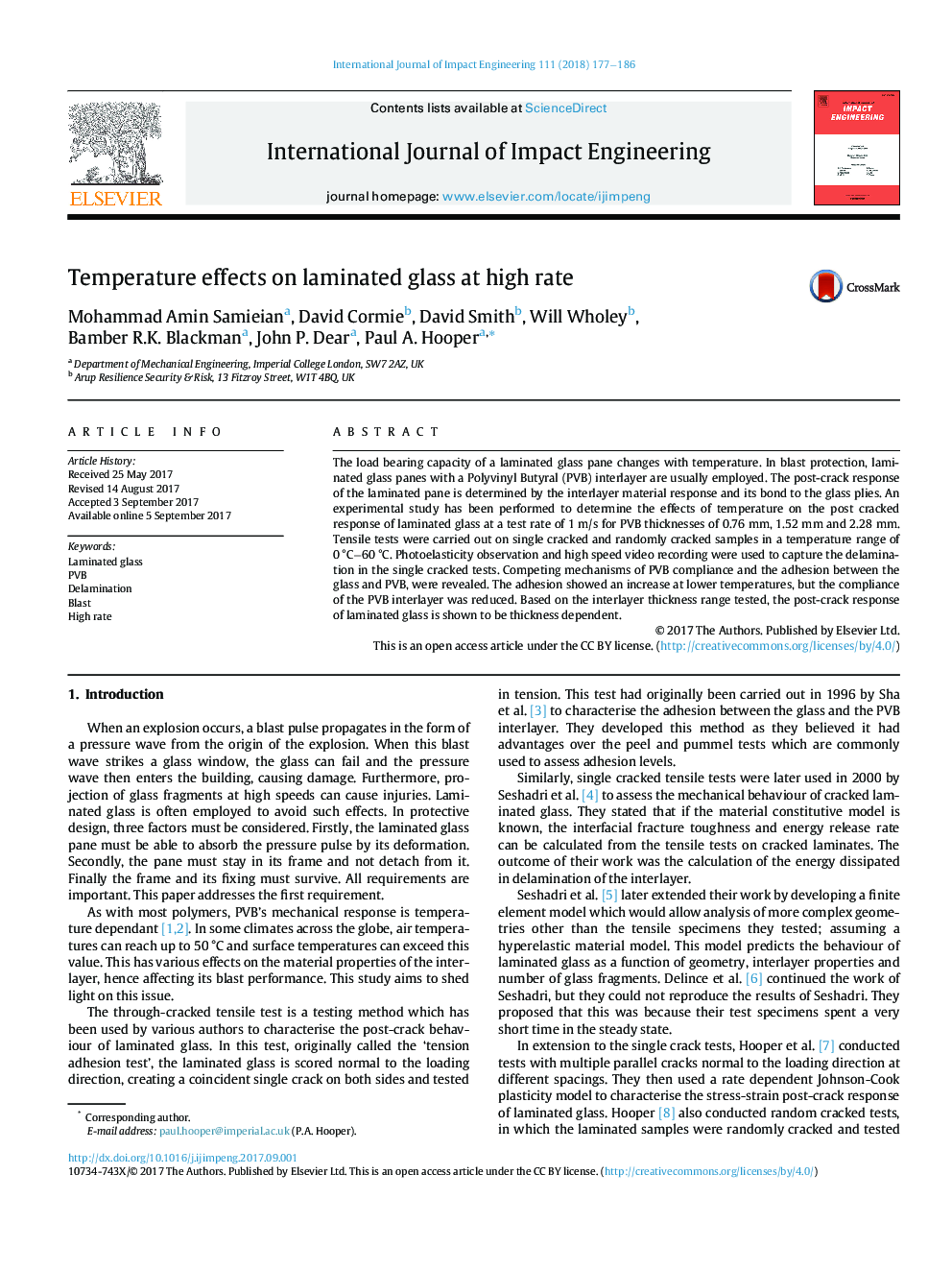| Article ID | Journal | Published Year | Pages | File Type |
|---|---|---|---|---|
| 5015407 | International Journal of Impact Engineering | 2018 | 10 Pages |
â¢The post-cracked response of laminated glass at high rate is sensitive to temperature and needs to be considered when designing for blast loading.â¢The post-cracked response of laminated glass is controlled by the compliance of the PVB interlayer and the adhesion between the glass and PVB layer.â¢The maximum energy absorbed by a cracked laminate occurs at a temperature where the adhesion and compliance of the interlayer balance.â¢The optimum temperature is dependent on PVB thickness.
The load bearing capacity of a laminated glass pane changes with temperature. In blast protection, laminated glass panes with a Polyvinyl Butyral (PVB) interlayer are usually employed. The post-crack response of the laminated pane is determined by the interlayer material response and its bond to the glass plies. An experimental study has been performed to determine the effects of temperature on the post cracked response of laminated glass at a test rate of 1 m/s for PVB thicknesses of 0.76 mm, 1.52 mm and 2.28 mm. Tensile tests were carried out on single cracked and randomly cracked samples in a temperature range of 0â¯Â°C-60â¯Â°C. Photoelasticity observation and high speed video recording were used to capture the delamination in the single cracked tests. Competing mechanisms of PVB compliance and the adhesion between the glass and PVB, were revealed. The adhesion showed an increase at lower temperatures, but the compliance of the PVB interlayer was reduced. Based on the interlayer thickness range tested, the post-crack response of laminated glass is shown to be thickness dependent.
